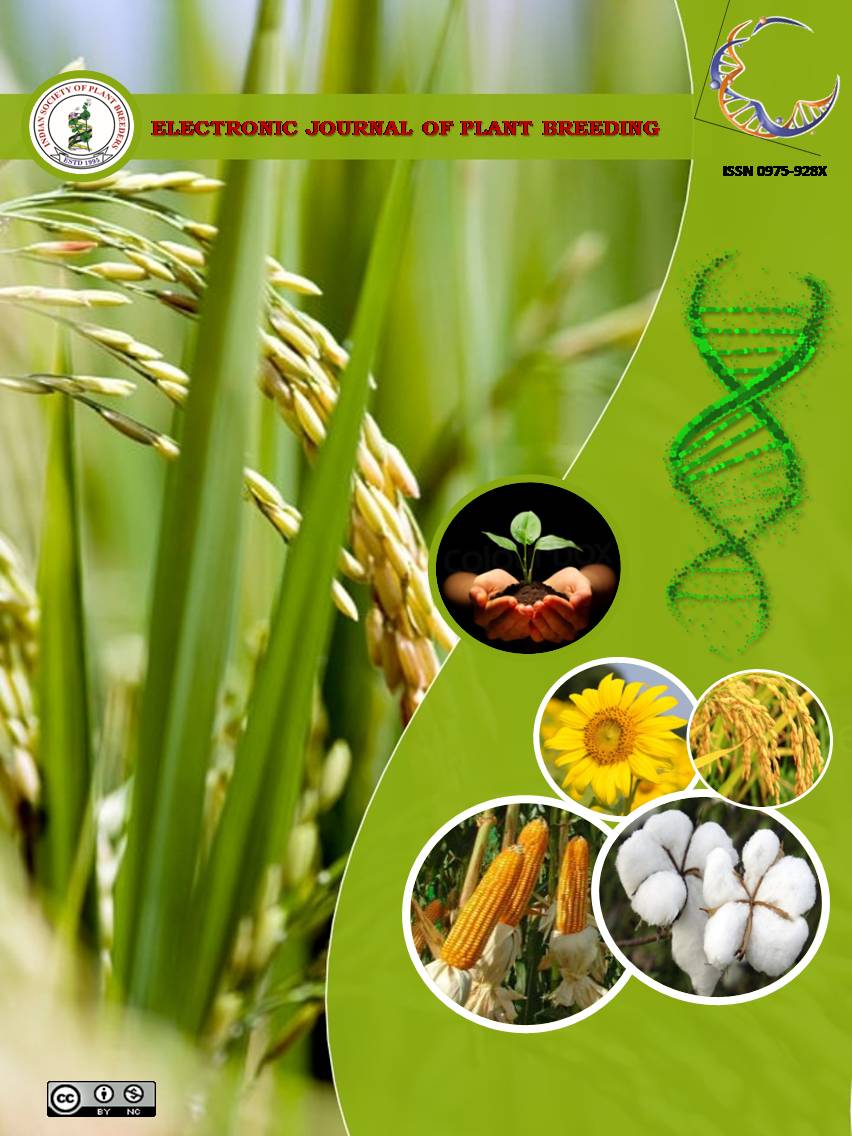Correlation and path analysis in large seeded groundnut genotypes
Abstract
Groundnut is a self pollinated leguminous oilseed crop cultivated in 3.35 lakh ha in Tamil Nadu for oil and food purposes. It is rich in protein and provides nutritious fodder to live stock. Breeding for quality parameters in addition to yield enhances the economic returns to the farmers and other stakeholders along the value chain, the large seeded groundnut fetches higher price in the market because of its export potential. To develop an elite genotypes, knowledge on inter relationship among the yield and its component characters and direct and indirect contribution towards yield is an important. Hence, the present study was undertaken to assess the nature and magnitude of association between pod yield and its components characters in large seeded groundnut genotypes. Observations were recorded on following seven characters viz., days to 50% flowering, plant height, number of branches per plant, number of pods per plant, 100 kernel weight, sound mature kernel, and single plant yield. The trait sound mature kernel and 100 kernel weight had positive and significant association with pod yield per plant. The path analysis disclosed that the character plant height had the highest positive direct effects on sound mature kernel followed by number of pod per plant and 100 kernel weight. The results revealed that the direct selection for the above mentioned traits could improve the pod yield in large seeded groundnut.

It is certified that:
- The corresponding author is fully responsible for any disputes arising due to the publication of his/her manuscript.
- The article has been seen by all the authors who are satisfied with its form and content.
- The sequence of names of authors in the by-line is as per their relative contribution to this experiment, giving due credit to all scientists who made notable contribution to it.
- All the authors fully understand that inclusion of any other co-authors or exclusion of any co-authors is not possible once the article has been submitted to the journal.
- The corresponding author takes full responsibility for this article.
- The address of the organization where the research was conducted is given.
- The article is exclusive for this journal, and the results reported here have not been sent (and will not be sent during its consideration by this journal) for publication in any other journal.
- Authors agree to abide by the objective comments of referees and do agree to modify the article into a short note as per the recommendation, for publication in the Electronic Journal of Plant Breeding.
- If published in Electronic Journal of Plant Breeding, the copyright of this article would vest with the Indian Society of Plant Breeders, who will have the right to enter into any agreement with any organization in India or abroad engaged in reprography, photocopying, storage and dissemination of information contained in it, and neither we nor our legal heirs will have any claims on royalty.


